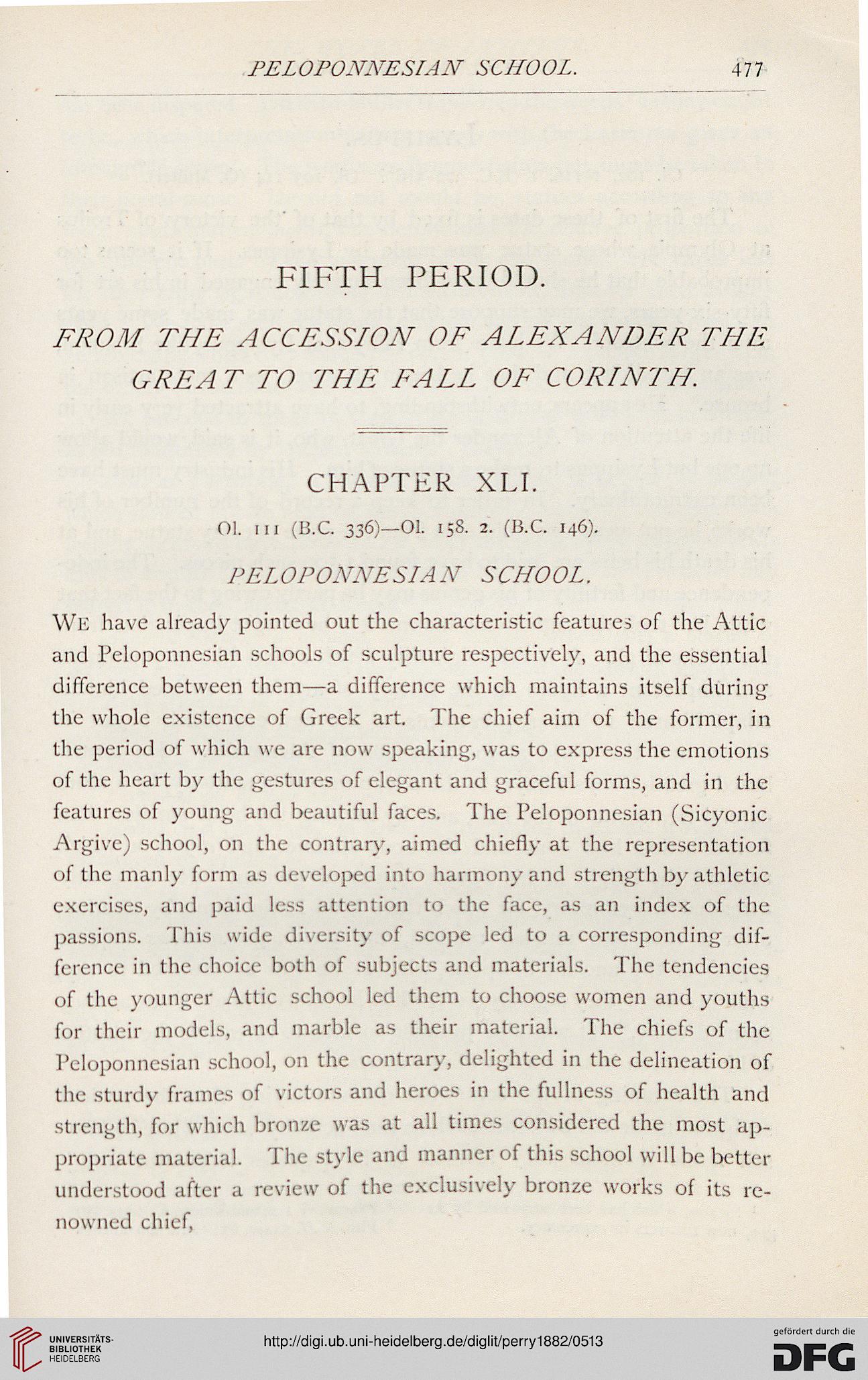PELOPONNESrAN SCHOOL.
FIFTH PERIOD.
FROM THE ACCESSION OF ALEXANDER THE
GREA T TO THE FALL OF CORINTH.
CHAPTER XLI.
OL in (B.C. 336)—Ol. 158. 2. (B.C. 146).
PELOPONNESIA N SCHOOL.
We have already pointed out the characteristic features of the Attic
and Peloponnesian schools of sculpture respectively, and the essential
difference between them—a difference which maintains itself during
the whole existence of Greek art. The chief aim of the former, in
the period of which we are now speaking, was to express the emotions
of the heart by the gestures of elegant and graceful forms, and in the
features of young and beautiful faces. The Peloponnesian (Sicyonic
Argivc) school, on the contrary, aimed chiefly at the representation
of the manly form as developed into harmony and strength by athletic
exercises, and paid less attention to the face, as an index of the
passions. This wide diversity of scope led to a corresponding dif-
ference in the choice both of subjects and materials. The tendencies
of the younger Attic school led them to choose women and youths
for their models, and marble as their material. The chiefs of the
Peloponnesian school, on the contrary, delighted in the delineation of
the sturdy frames of victors and heroes in the fullness of health and
strength, for which bronze was at all times considered the most ap-
propriate material. The style and manner of this school will be better
understood after a review of the exclusively bronze works of its re-
nowned chief.
FIFTH PERIOD.
FROM THE ACCESSION OF ALEXANDER THE
GREA T TO THE FALL OF CORINTH.
CHAPTER XLI.
OL in (B.C. 336)—Ol. 158. 2. (B.C. 146).
PELOPONNESIA N SCHOOL.
We have already pointed out the characteristic features of the Attic
and Peloponnesian schools of sculpture respectively, and the essential
difference between them—a difference which maintains itself during
the whole existence of Greek art. The chief aim of the former, in
the period of which we are now speaking, was to express the emotions
of the heart by the gestures of elegant and graceful forms, and in the
features of young and beautiful faces. The Peloponnesian (Sicyonic
Argivc) school, on the contrary, aimed chiefly at the representation
of the manly form as developed into harmony and strength by athletic
exercises, and paid less attention to the face, as an index of the
passions. This wide diversity of scope led to a corresponding dif-
ference in the choice both of subjects and materials. The tendencies
of the younger Attic school led them to choose women and youths
for their models, and marble as their material. The chiefs of the
Peloponnesian school, on the contrary, delighted in the delineation of
the sturdy frames of victors and heroes in the fullness of health and
strength, for which bronze was at all times considered the most ap-
propriate material. The style and manner of this school will be better
understood after a review of the exclusively bronze works of its re-
nowned chief.




